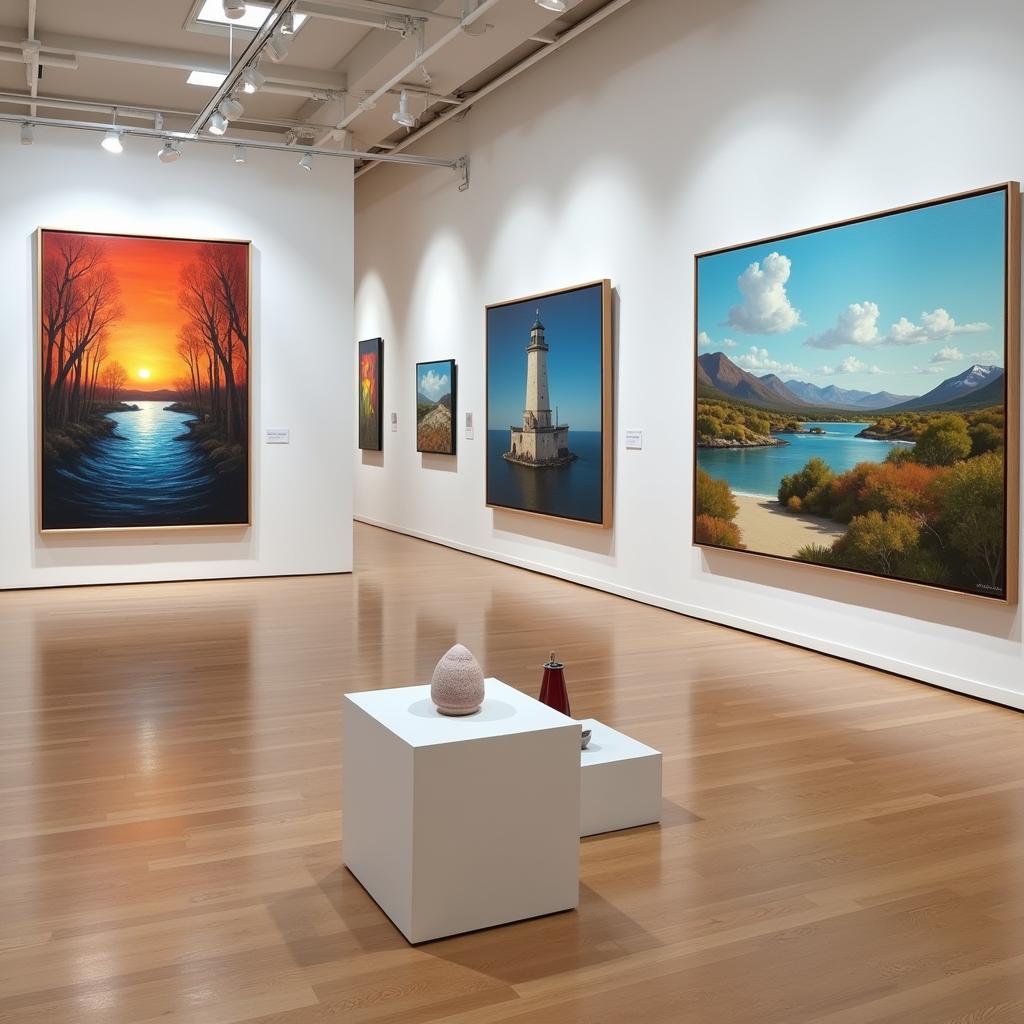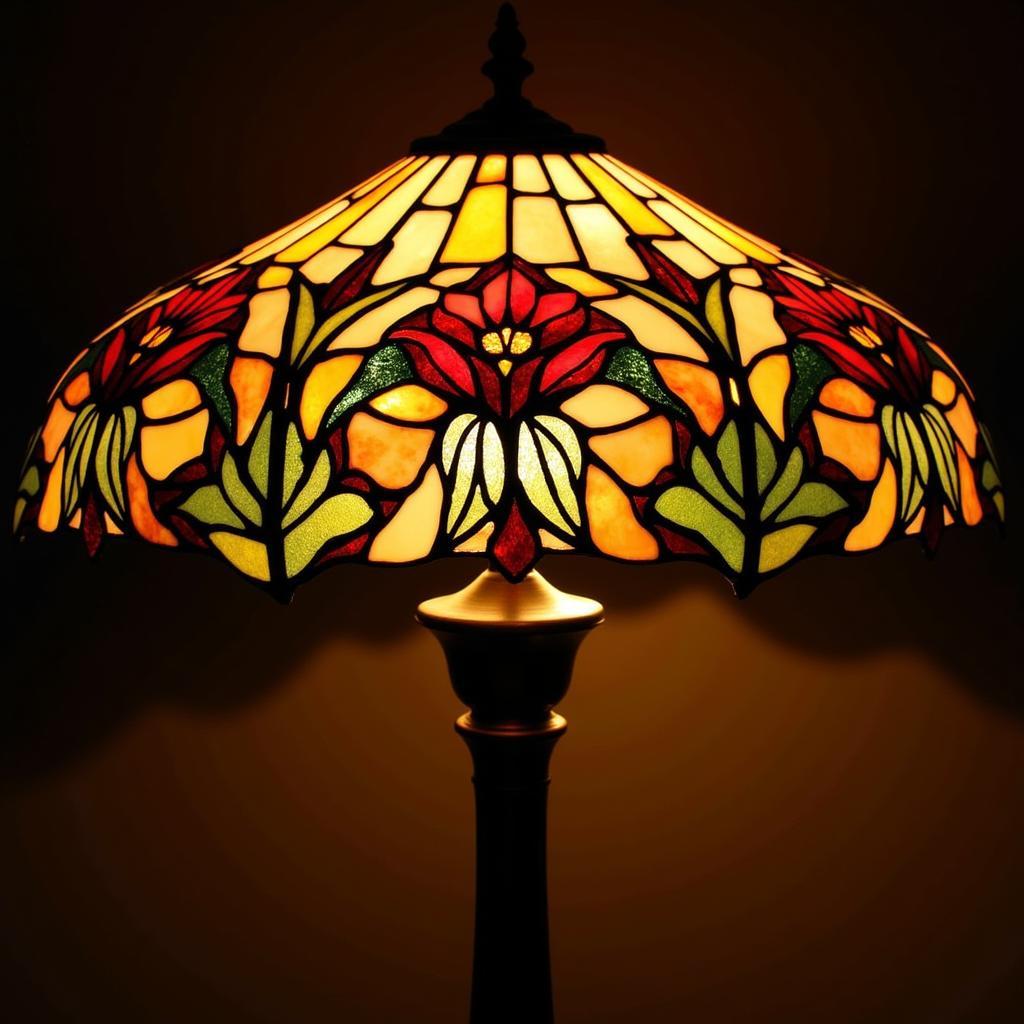Unveiling the Timeless Beauty of Oil on Canvas Art
Oil painting, a medium synonymous with artistic mastery and enduring beauty, has captivated art enthusiasts for centuries. The allure of Oil On Canvas Art lies not only in its visual richness but also in the depth, texture, and luminosity it offers. This article delves into the world of oil painting, exploring its history, techniques, and enduring appeal in today’s art scene.
A Glimpse into the History of Oil on Canvas Art
The origins of oil painting can be traced back to the 5th century, but it wasn’t until the 15th century that oil on canvas emerged as the dominant medium in European art. Artists like Leonardo da Vinci and Rembrandt harnessed the versatility of oil paints to create masterpieces that continue to inspire awe. The slow drying time of oil paints allowed for meticulous detail and subtle blending, while the ability to layer colors enabled artists to achieve incredible depth and realism.
 Oil Painting Techniques
Oil Painting Techniques
Why Oil on Canvas Remains a Beloved Medium
Despite the emergence of new and innovative art forms, oil on canvas retains its place as a cornerstone of the art world. Here’s why:
- Unmatched Depth and Luminosity: Oil paints possess a translucency that allows light to penetrate the layers, creating a sense of depth and inner glow. This luminosity gives oil paintings a lifelike quality that is hard to replicate with other mediums.
- Rich and Vibrant Colors: Oil paints are known for their rich and vibrant pigments, which retain their intensity over time. The slow drying process allows for subtle color transitions and the creation of nuanced hues.
- Textural Possibilities: From smooth, blended surfaces to thick, impasto strokes, oil paint offers a wide range of textural possibilities. This versatility allows artists to experiment with different effects and create unique visual experiences.
 Contemporary Oil on Canvas Art
Contemporary Oil on Canvas Art
Exploring Different Styles of Oil on Canvas Art
Over the centuries, artists have embraced a myriad of styles and techniques in oil on canvas painting. Some of the most notable styles include:
- Realism: This style aims to depict subjects with meticulous detail and accuracy, often focusing on capturing the play of light and shadow.
- Impressionism: Characterized by loose brushstrokes and a focus on capturing the fleeting moment, Impressionism revolutionized the way we perceive light and color. Artists like Monet and Renoir are synonymous with this style.
- Abstract Expressionism: This mid-20th century movement embraced spontaneity and emotional expression, often using bold colors and gestural brushwork. Jackson Pollock and Mark Rothko are prominent figures in Abstract Expressionism.
No matter your artistic taste, there’s an oil on canvas artwork out there waiting to captivate your imagination. From classic portraits to abstract landscapes, the possibilities are limitless.
What to Consider When Choosing Oil on Canvas Art
Whether you’re a seasoned collector or just starting your art journey, selecting oil on canvas art for your space involves considering several factors:
- Personal Taste: What styles, subjects, and color palettes resonate with you?
- Space and Decor: Consider the size of the artwork and how it complements your existing decor.
- Artist and Provenance: Research the artist’s background and the artwork’s history to ensure authenticity and value.
- Budget: Oil on canvas art can range in price, so it’s important to establish a budget before you start browsing.
Finding the perfect oil on canvas artwork is a journey of discovery. Embrace the process and allow yourself to be captivated by the timeless beauty of this enduring art form.
Frequently Asked Questions about Oil on Canvas Art
1. How do I care for my oil on canvas painting?
To preserve the beauty of your artwork, avoid hanging it in direct sunlight or humid environments. Dust it regularly with a soft, dry cloth. For deeper cleaning, consult a professional art conservator.
2. What is the difference between oil on canvas and acrylic on canvas?
While both mediums offer vibrant colors, oil paints have a slower drying time, allowing for more blending and layering. Acrylic paints dry faster and are water-based, making them easier to clean up.
3. Can I clean an oil on canvas painting myself?
It’s best to avoid cleaning an oil painting yourself, as improper techniques can damage the artwork. Consult a professional art conservator for safe and effective cleaning methods.
4. Where can I buy high-quality oil on canvas art?
Reputable art galleries, online marketplaces specializing in art, and directly from artists are all good options for purchasing oil on canvas art.
5. What is the average lifespan of an oil on canvas painting?
With proper care, oil on canvas paintings can last for centuries. The longevity of the artwork depends on factors like the quality of the materials used, storage conditions, and previous restoration work.
Looking for more inspiration for your art collection? Explore the captivating world of elephant art canvas and add a touch of majestic beauty to your space. If you prefer a more subdued aesthetic, consider exploring the calming elegance of neutral colours art.
For those drawn to historical charm, antique framed art offers a glimpse into the past while adding a touch of sophistication to any decor. If you’re looking to make a bold statement, large 4 piece wall art can transform your space with its grand scale and captivating imagery.
Embrace your eclectic style and infuse your home with a touch of whimsical charm with love shack fancy wall art, a perfect choice for adding a touch of personality and flair to your walls.
For any assistance, feel free to reach out to us at Phone Number: 02462573573, Email: [email protected] or visit us at Savico Megamall, 7-9 Đ. Nguyễn Văn Linh, Gia Thụy, Long Biên, Hà Nội 10000, Việt Nam. Our customer support team is available 24/7 to assist you.




